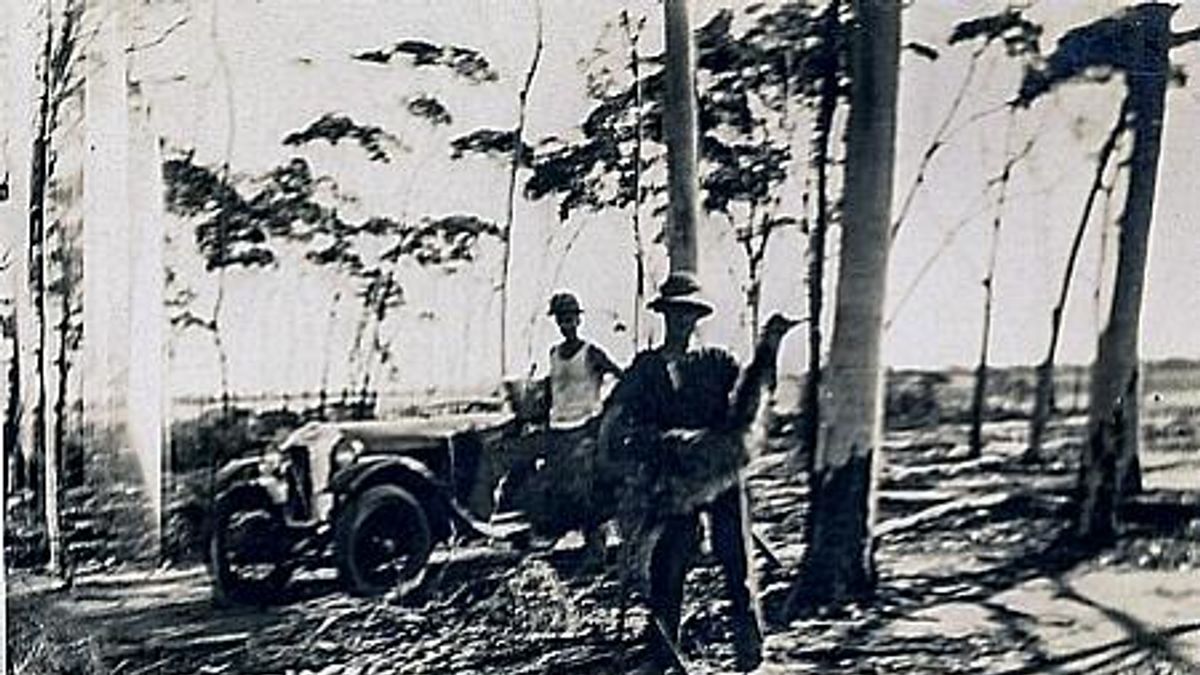JAKARTA - Sophisticated weapons are not always the determinant of victory in war. Australia, for example. Not a weapon. Australia actually lost the war against a flock of emu birds. The humiliating defeat was proof that weapons and gunpowder were not always the answer. The war is widely remembered as The Great Emu War.
The prowess of the Australian military in fighting on the battlefield is unquestionable. Australia's involvement in World War I is proof of that. Australia sent many military troops to help the allied forces conquer their opponents. As a result, troops from the allied bloc -- Britain, Russia, and so on -- won against the central bloc -- Germany, Austria Hungary, the Ottoman Empire, and Bulgaria.
World War I officially ended in 1918. The war heroes then returned to Australia. Some have continued their military careers. While several other war veterans were given a piece of land by the Australian government in the Campion District, Western Australia. The land in Western Australia was awarded for the achievements of bravery, patriotism, loyal friend attitude, and nobility that was willing to sacrifice to the fullest.
The government plans to subsidize the cultivation of the land in the form of wheat. To survive, he said. Launching the History of Yesterday page, the land donation was quite helpful for many Australian war veterans. Moreover, the world at that time was hit by the Great Depression of 1932 which triggered recessions in various countries of the world, including Australia.
The storm of the world crisis made veterans who became farmers immediately work hard. They began to work on the dry land so that wheat could be grown for wheat. In fact, irrigation made by farmers actually attracts the attention of Australia's endemic animal, the emu. Drought is the cause of the emu, which usually lives in the Australian outback, then migrates to farmers' plantations.
No kidding. The number of the world's second largest flock of birds that join the migration reaches 20 thousand. As a result, the garden was badly damaged. Even the wheat that is planted is also eaten by the emu. Do not want to miss, the damage was also used by wild rabbits. The animal started eating wheat and destroying the farmer's buildings.

Because of this, each owner of the wheat orchard felt a huge loss. So, farmers are like falling down the stairs because of the actions of a group of emu. The peasants who were ex-soldiers then remembered how effective machine guns could be against a herd of emu. However, killing emu was definitely against the rules.
Therefore, the farmers immediately petitioned the Australian Minister of Defence, Sir George Pearce. Sir George Pearce responded immediately. With his blessing, Lewis' automatic machine gun was sent to the Campion District. The emu eradication operation was officially held on November 2. However, Sir George Pearce made one condition for the peasants. Those who are allowed to carry out the extermination are not farmers, but the Australian military.
“A group of gunners armed with Lewis machine guns were again dispatched to the Campion district to exterminate the emu, who had caused serious damage to crops. The officer in charge of the operation received orders from military headquarters in Sydney for 100 emu skins. The fur would be used to make hats worn by horsemen,” wrote a report in the Canberra Times newspaper entitled Machine Guns Sent Against Emu Pest (1932).
When the emu wins the war
Sir George Pearce in the emu crackdown is confident. He believed that victory against the emu could soon be achieved by the Australian military forces. Even in the shortest time. Simultaneously, he sent a cameraman to the Campion District to record the victory.
Moreover, in his memo, Sir George Pearce ordered his men to immediately stock up on emu fur, a sign of victory for the material for their hats. The Minister of Defense then sent Major GPW Meredith to lead the operation. His departure brought with him about 10,000 rounds of ammunition. The local newspapers began to describe the war against the emu as a major war. The news lasted for two weeks.
In those two weeks, the military forces were able to cripple the emu. But not much. All because of the strategy that Meredith's troops used was to herd the emu into a small area. After that, the emu will be massacred en masse. "300 emu killed in the first duel," wrote the Canberra Times newspaper, November 12, 1932.
Bake away from fire. The original plan on paper will bring victory quickly. Not necessarily on the field. Australian military forces faced many obstacles. Rain is one of them. Maybe rain is good for the plants, but not for the emus. The rain caused the herd of emu to disperse. As a result, emu can not be attacked, moreover emu move quickly. Because of that emu is not an easy target to shoot.

Another control because Australian military forces do not take into account the greatness of the emu. Which, when attacked, the emus will break up into small groups and they run in different directions making it difficult to fight. It was recorded that from 10 thousand ammo spent, military troops could only kill 986 emu. That figure went on to become one of the worst bullet-to-kill ratios in world military history.
In the end, the echoes of the battle with the emu began to spread throughout the world. Tones of disapproval of the action of exterminating emu voiced in various places. The world community considers the action too ridiculous. Because the Australian military can't do anything, even if they win. Losing shame, winning was normal. This opinion then influenced a series of Australian MPs. They asked Sir George Pearce to immediately withdraw the troops from the Campion District. The withdrawal is proof of victory for the emu flock.
“One of those failures was that the military expeditions carried out by the Royal Australian artillery detachment were using a wide range of military technology techniques, including mobile warfare tactics and guerrilla tactics.”
“The emu war in western Australia, was one of the saddest failures of the Australian military. Moreover, the role brings the most complete victory for the emu flock. and the war actually attracted public sympathy for the emu,” concluded The Sunday Herald newspaper report entitled New Strategy In A War On The Emu (1953).
*Read other information about WORLD HISTORY or read other interesting articles from Detha Arya Tifada.
Other MEMORIESThe English, Chinese, Japanese, Arabic, and French versions are automatically generated by the AI. So there may still be inaccuracies in translating, please always see Indonesian as our main language. (system supported by DigitalSiber.id)













